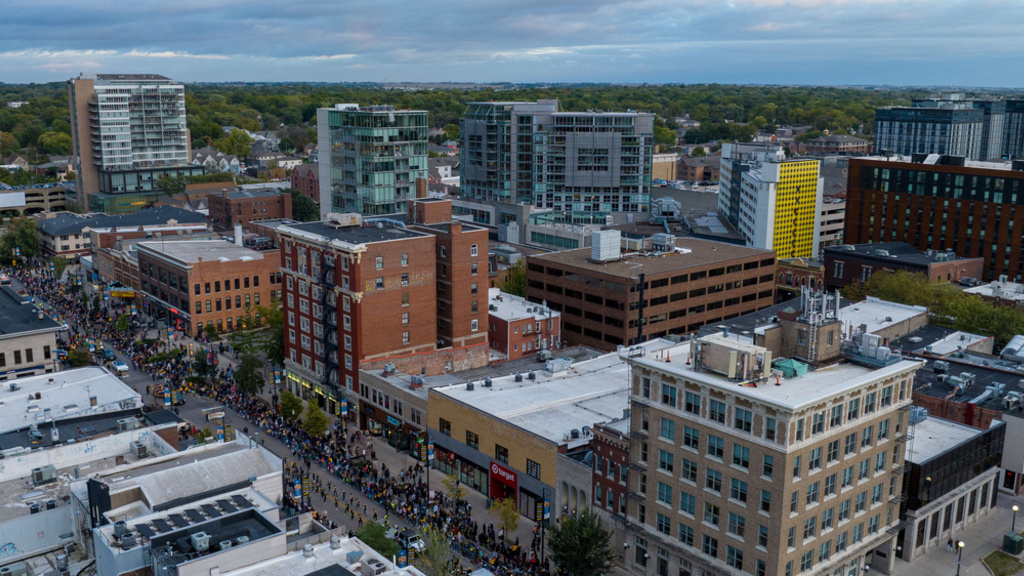Main navigation
If you are considering being one of our Iowa residents, you may have questions about the residency program, about Iowa City, about the University of Iowa. Below are some short answers.
What fellowship opportunities are available?
Up to 10 to 12 fellows train in our accredited fellowship programs each year. We have fellowships in all of our sub-specialty areas. Most are one-year fellowships, but 2-year fellowship opportunities are available as well. About half of our residents enter fellowships immediately after graduation.

Why Choose Iowa
Read more about Iowa City and the reasons this is the perfect place for residency.
Is there sufficient patient volume so that I can have multiple exposures to a variety of eye diseases and conditions?
Our patients represent all age groups and all socioeconomic strata and they present with virtually all acute and chronic conditions of the eye.
With nearly 64,000 annual patient visits you will see plenty of the most common eye conditions and many of the less common ones as well. Our clinical practice serves the general eye care needs of the local community and the sub-specialty needs of the region. The UIHC is a tertiary care center and our department receives referrals for specialized services from Iowa and neighboring states. Some patients travel from outside the continent to be seen by our physicians.
In an average year, patient visits per sub-specialty are approximately:
- Cornea: 7,000
- Comprehensive Ophthalmology: 14,400
- Glaucoma: 7,300
- Neuro-Ophthalmology: 2,650
- Oculoplastic Surgery: 6,300
- Contact Lens: 4,100
- Pediatric Ophthalmology: 9,800
- Retina/Vitreous: 20,000
- Vision Rehabilitation: 3,700
- Other: 1,600
What is the program's balance between primary and specialty care?
We seek to provide each resident physician with a sufficiently broad experience that he or she can choose wisely among all the options to pursue a career in ophthalmology in private practice, group practice, or an academic career. About half of our graduates go on to private practice while the remainder go on to fellowships in ophthalmic subspecialties or academic comprehensive ophthalmology.
What are the on-call expectations of ophthalmology residents?
Call for resdients is divided into first call and backup call. Faculty call and fellows cover for Retina, Oculoplastics, Neuro-ophthalmology, as well as general anterior segment call. Resident call schedules are prepared by the residents. Weekend calls are covered by the PGY-2 residents and the week day calls are split by the second year residents. PGY-2 residents cover Monday-Thursday in a dedicated Night Float rotation. Weekends and holidays are covered by first year residents. PGY-4 residents provide back up call. At-home call must not be so frequent as to preclude rest and reasonable personal time for each resident. Residents taking at-home call are provided with one day in 7 completely free from all educational and clinical responsibilities, averaged over a 4-week period.
Is there a research requirement for graduation?
Yes, participation in research is an integral part of the training experience. During the first year, residents develop a research plan for conducting at least one research project. All projects are done in collaboration with a faculty preceptor who will supervise all phases of the project. Each resident presents the results of his/her research at the department's resident and fellow research day. The initial presentation is made in the spring of the first year even when the results are in the preliminary stages. Updated presentations are made in the spring of subsequent years revealing the maturing or completed project. While some projects will not result in a published manuscript, our residents are co-authors on many of published papers each year.